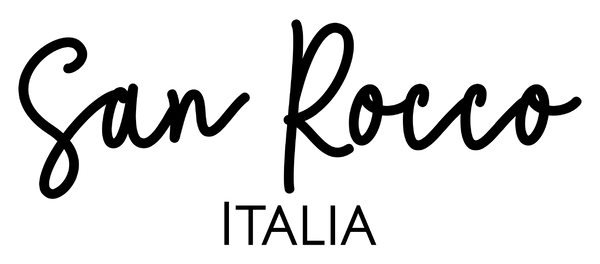
Understanding What is Vegetable Tanning in Leather Production
Share

Vegetable tanning is celebrated for turning raw animal hides into high-quality leather using nothing but natural extracts from trees and plants. Most people expect modern chemical processes to dominate the industry, yet over 90 percent of leather is now produced using synthetic chrome tanning. The real surprise is that vegetable tanning not only protects the environment but also creates leather that lasts longer, looks better with age, and tells a unique story each time you use it.
Table of Contents
- Defining Vegetable Tanning: The Basics Of Leather Treatment
- The Importance Of Vegetable Tanning: Why It Matters
- The Process Of Vegetable Tanning: How It Works
- Key Concepts In Vegetable Tanning: Materials And Techniques
- The Impact Of Vegetable Tanning On Sustainability And Luxury
Quick Summary
| Takeaway | Explanation |
|---|---|
| Vegetable tanning uses natural plant extracts | This traditional leather method employs tannins from sources like oak and chestnut to treat animal hides sustainably. |
| Eco-friendly and biodegradable process | Unlike chrome tanning, it eliminates toxic waste and significantly reduces environmental impact. |
| Leather develops a unique character over time | Vegetable-tanned leather ages gracefully, creating a rich patina and personal narrative with use. |
| Supports artisanal craftsmanship and heritage | The process is rooted in ancient techniques, connecting artisans with historical practices in leather production. |
| Long-lasting material with superior quality | This leather type is more durable than chemically treated alternatives, ensuring longevity and aesthetic appeal. |
Defining Vegetable Tanning: The Basics of Leather Treatment
Vegetable tanning represents a time-honoured method of leather production that transforms raw animal hide into durable, high-quality leather using natural plant-based extracts. Unlike modern synthetic processes, this traditional technique draws upon centuries of craftsmanship, creating leather with unique characteristics and environmental benefits.
The Natural Chemistry of Vegetable Tanning
At its core, vegetable tanning involves using organic tannins extracted from tree bark, leaves, and plant materials to stabilise and preserve animal hides. These natural compounds, primarily found in sources like oak, chestnut, and mimosa trees, chemically bond with protein structures in the hide, creating a robust and flexible material. The process is distinguished by its reliance on natural ingredients, which stand in stark contrast to chrome-based chemical tanning methods that dominate contemporary leather production.
The key characteristics of vegetable tanning include:
- Environmentally sustainable production process
- Natural colour variations and unique patina development
- Enhanced leather breathability
- Biodegradable and non-toxic treatment
Historical and Modern Significance
Traditionally practised by skilled artisans in regions like Italy, vegetable tanning has deep roots in cultural craftsmanship. According to World Leather, this method has been used for thousands of years, with evidence of similar techniques dating back to ancient civilisations. Modern practitioners continue to honour these traditional techniques, combining ancestral knowledge with contemporary understanding of leather science.
Understanding vegetable tanning reveals more than just a manufacturing process – it represents a commitment to quality, sustainability, and respect for natural materials. The technique transforms a raw hide into a material that tells a story, develops character over time, and connects contemporary consumers with age-old artisanal practices.
The Importance of Vegetable Tanning: Why It Matters
Vegetable tanning transcends a mere manufacturing technique, representing a profound approach to leather production that balances environmental responsibility, artisanal craftsmanship, and superior material quality. This method offers significant advantages that extend far beyond traditional leather processing, creating a product with deeper intrinsic value and sustainable credentials.
Environmental and Sustainable Advantages
In an era of increasing environmental consciousness, vegetable tanning emerges as a responsible alternative to chemical-intensive leather production. Unlike chrome tanning, which uses toxic heavy metals that can contaminate water systems, vegetable tanning utilises natural plant extracts that are biodegradable and environmentally benign. The process minimises ecological footprint while preserving traditional manufacturing techniques that have been refined over centuries.
![]()
Key environmental benefits include:
- Zero toxic chemical discharge into water systems
- Renewable and biodegradable production process
- Reduced carbon emissions compared to synthetic tanning methods
- Support for sustainable forestry and agricultural practices
Long-Term Material Quality and Aesthetic Development
Vegetable-tanned leather possesses remarkable characteristics that distinguish it from chemically processed alternatives. The natural tannins create a material that ages gracefully, developing a rich patina that tells a unique story of use and wear. According to Leather Research Laboratory, vegetable-tanned leather can last significantly longer than chemically treated leather, with improved durability and aesthetic appeal.
The leather develops a unique character over time, becoming more beautiful with each use. Unlike synthetic materials that degrade or look worn, vegetable-tanned leather improves, creating a connection between the user and the material that transcends typical consumer product experiences. This approach represents not just a manufacturing choice, but a philosophy of creating products with inherent value, longevity, and emotional resonance.
To clarify the fundamental differences between vegetable tanning and chrome tanning, the following comparison table summarises the key aspects covered in the article.
| Feature | Vegetable Tanning | Chrome Tanning |
|---|---|---|
| Tanning Agents | Natural plant tannins (oak, chestnut, etc.) | Chromium salts / synthetic chemicals |
| Environmental Impact | Low, biodegradable, eco-friendly | High, toxic waste, heavy metal runoff |
| Leather Characteristics | Develops patina, unique character | Maintains uniform look, less patina |
| Durability | Superior, long-lasting | Generally less durable |
| Processing Time | Several weeks | Few days |
| Historical Application | Ancient, traditional craftsmanship | Modern industrial process |
| Percentage of World Production | Less than 10% | Over 90% |
The Process of Vegetable Tanning: How It Works
Vegetable tanning transforms raw animal hides into supple, durable leather through a meticulous process that combines scientific precision with artisanal craftsmanship. This complex technique requires expert knowledge, patience, and an intricate understanding of natural chemical interactions between plant-based tannins and animal hide proteins.
Preparing the Hide
Before tanning begins, raw hides undergo extensive preparation to ensure optimal absorption of natural tannins. This initial stage involves several critical steps that remove impurities and prepare the hide’s protein structure for chemical transformation. Skilled artisans carefully clean the hide, removing hair, flesh, and other organic materials through a series of mechanical and chemical treatments that preserve the hide’s fundamental structural integrity.
Key preparation stages include:
- Soaking to rehydrate and clean the hide
- Removing hair and epidermal layers
- Deliming to neutralise alkaline residues
- Bating to soften and prepare protein structures
The Tanning Sequence
The core of vegetable tanning involves immersing hides in a series of tannin-rich solutions derived from plant materials like oak, chestnut, and mimosa bark. According to Traditional Leather Institute, this process occurs in large wooden vats where hides are systematically moved through increasingly concentrated tannin solutions. The natural tannins gradually penetrate the hide’s protein structure, creating strong molecular bonds that stabilise and transform the material.
The tanning process is not merely a chemical reaction but an intricate dance of molecular interactions. Natural tannins bind with collagen proteins, creating a stable, flexible material that resists decomposition and develops unique aesthetic qualities. Each hide undergoes weeks of careful treatment, with artisans monitoring colour, texture, and structural development to ensure exceptional quality. This slow, deliberate approach distinguishes vegetable tanning from faster, more industrial leather production methods.
The following table outlines the main steps involved in the vegetable tanning process, providing a concise overview for readers.
| Stage | Purpose | Key Actions |
|---|---|---|
| Soaking | Rehydrate and cleanse raw hide | Immersing in water to remove dirt |
| Dehairing | Remove unwanted hair and epidermal layers | Mechanical or chemical depilation |
| Deliming | Neutralise alkaline residues post-dehairing | Washing and treating with mild acids |
| Bating | Soften the hide and prepare protein structures for tanning | Enzymatic treatment to relax fibres |
| Tanning | Transform the hide using natural tannin solutions | Progressive immersion in plant-based extracts |
| Drying/Finishing | Stabilise and finalise leather properties | Air drying, conditioning, and finishing touches |
Key Concepts in Vegetable Tanning: Materials and Techniques
Vegetable tanning represents a sophisticated craft that blends scientific understanding with traditional artisanal techniques. The selection and application of natural materials play a crucial role in transforming raw animal hides into high-quality leather with distinctive characteristics and sustainable credentials.
Natural Tannin Sources
The foundation of vegetable tanning lies in carefully selected plant-based tannins, which are complex polyphenolic compounds found in various botanical sources. Different plant materials contribute unique properties to the leather, creating nuanced variations in colour, texture, and durability. Artisans meticulously choose tannin sources based on their specific chemical compositions and desired leather characteristics.
Primary tannin sources include:
- Oak bark, renowned for producing rich, deep colours
- Chestnut extracts, offering excellent leather stability
- Mimosa bark, providing superior penetration qualities
- Quebracho wood, known for intense tanning properties
Chemical Interactions and Material Transformation
The vegetable tanning process involves intricate molecular interactions between tannins and collagen proteins in animal hides. According to International Leather Research Centre, these natural compounds form complex chemical bonds that stabilise the hide’s protein structure, creating a material with exceptional durability and unique aesthetic qualities.
These molecular interactions are not merely chemical reactions but sophisticated transformations that convert a raw, unstable hide into a resilient material. The process requires precise temperature control, specific pH levels, and carefully managed concentration gradients to ensure optimal tannin absorption. Skilled artisans monitor these microscopic changes, understanding that each hide responds uniquely to the tanning process, making vegetable tanning both a scientific discipline and an art form.
The Impact of Vegetable Tanning on Sustainability and Luxury
Vegetable tanning represents a profound intersection between environmental responsibility and luxury craftsmanship, offering a sustainable approach to leather production that challenges conventional manufacturing paradigms. This method transcends mere production technique, embodying a holistic philosophy that values ecological integrity alongside exceptional material quality.
Environmental Sustainability Metrics
The environmental advantages of vegetable tanning extend far beyond traditional leather processing methods. By utilising natural plant-based tannins, this technique dramatically reduces ecological impact through renewable resources and minimised chemical interventions. Unlike chrome tanning, which generates significant toxic waste, vegetable tanning creates a production cycle that respects natural ecosystems and supports circular economic principles.
Key environmental benefits include:
- Zero heavy metal contamination in water systems
- Completely biodegradable leather production
- Reduced carbon emissions compared to synthetic processes
- Support for sustainable agricultural and forestry practices
Luxury and Longevity Intersection
Contrary to misconceptions, vegetable tanning does not compromise luxury but actually enhances material quality and aesthetic potential. According to Sustainable Leather Institute, vegetable-tanned leather develops a unique patina that becomes more beautiful with age, creating a direct emotional connection between the user and the material. This approach transforms leather from a mere commodity into a narrative object that carries personal history and craftsmanship value.

The luxury of vegetable-tanned leather lies not in artificial perfection but in its organic, evolving character. Each piece tells a story of careful production, natural transformation, and respect for material integrity. By choosing vegetable-tanned leather, consumers invest in products that represent a sophisticated understanding of sustainability, quality, and timeless design.
Experience True Italian Craftsmanship with Vegetable-Tanned Leather
If you are inspired by the rich tradition of vegetable tanning and searching for leather goods that embody both sustainable values and timeless elegance, look no further. The article highlighted how many modern products lack the authentic patina and durability that only meticulous, natural processes can provide. At San Rocco Italia, we understand your desire for items that are not only beautiful but also responsibly made using premium full-grain leather, treated with traditional methods as described in our Understanding What is Vegetable Tanning in Leather Production article.

Imagine carrying a handbag that tells a story through its evolving patina and exquisite feel. Let your next accessory reflect your values and appreciation for artistry. Visit San Rocco Italia to explore our exclusive collection, made in Italy by skilled artisans. Do not miss your chance to own leather goods that represent environmental responsibility and luxury. Shop today and experience the difference true craftsmanship makes.
Frequently Asked Questions
What is vegetable tanning in leather production?
Vegetable tanning is a traditional method of treating animal hides using natural plant-based tannins derived from tree bark, leaves, and other plant materials. This process preserves and stabilises the hides, transforming them into durable, high-quality leather.
How does vegetable tanning differ from chrome tanning?
Unlike chrome tanning, which involves toxic heavy metals, vegetable tanning relies on natural, biodegradable plant extracts. This method is environmentally sustainable and produces leather that develops unique character and improves with age.
What are the benefits of using vegetable-tanned leather?
Vegetable-tanned leather is environmentally friendly, free from toxic chemicals, and biodegradable. It also has enhanced breathability, develops a beautiful patina over time, and exhibits greater durability compared to chemically treated leather.
How long does the vegetable tanning process take?
The vegetable tanning process is meticulous and can take several weeks to complete. During this time, hides are treated with tannin-rich solutions, allowing the natural compounds to adequately penetrate and bond with the hide’s proteins, resulting in high-quality leather.


